D.D. Shostakovich "Leningrad Symphony"
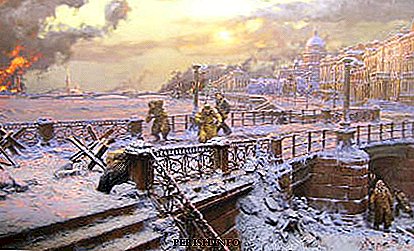
Shostakovich's Seventh Symphony (Leningrad) is a great work, reflecting not only the will to win, but also the insuperable strength of the spirit of the Russian people. Music is a chronicle of the war years, in every sound a trace of history is heard. A grandiose composition gave hope and faith not only to people in the besieged Leningrad, but to the entire Soviet people.
You can find out how the work was composed and under what circumstances it was first performed, as well as the content and a lot of interesting facts on our page.
The history of the creation of the "Leningrad Symphony"
Dmitri Shostakovich has always been a very sensitive person, as if he anticipated the start of a complex historical event. So back in 1935, the composer began to compose variations in the genre of passacaglia. It is worth noting that this genre is a mourning procession common in the territory of Spain. The essay was intended to repeat the variation principle used by Maurice Ravel in Bolero. The sketches were even shown to the students of the conservatory, where a brilliant musician taught. The theme of passacaglia was quite simple, but its development was created thanks to a dry drumbeat. Gradually, the dynamics grew to great power, which showed a symbol of fear and horror. The composer was tired of working on the work and put it off.
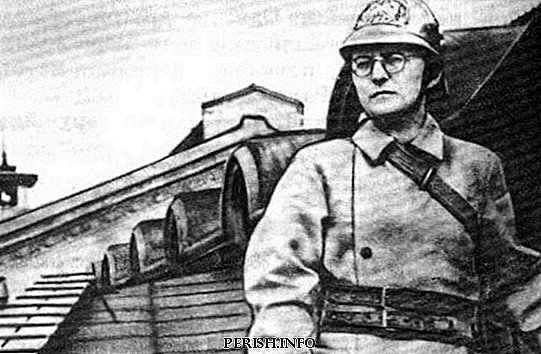
The war awakened in Shostakovich the desire to complete the work and bring it to a triumphant and victorious finale. The composer decided to use the previously started by Passacaglia in the symphony, it became a big episode, which was based on variations, and replaced the development. In the summer of 1941 the first part was completely ready. Then the composer began work on the middle parts, which were completed by the composer before the evacuation from Leningrad.
The author recalled his own work on the work: “I wrote it faster than previous works. I could not do otherwise, and not compose it. A terrible war was going on. I just wanted to capture the image of our country, which so desperately fights in my own music. On the first day of the war, I started to work. Then I lived in the conservatory, like many of my familiar musicians. I was an anti-air defense fighter. I didn’t sleep and didn’t eat and looked away from composing only when I was on duty or when air alarms ".
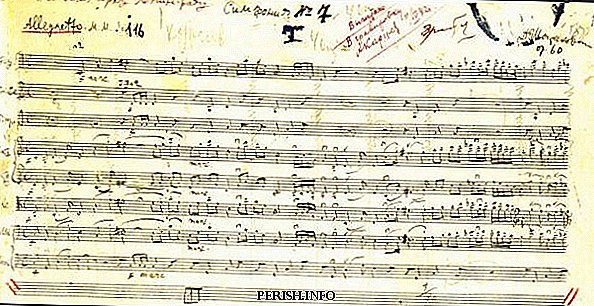
The fourth part was given the hardest, because it was supposed to be the triumph of good over evil. The composer felt anxiety, the war very seriously affected his moral state. His mother and sister were not evacuated from the city, and Shostakovich was very worried about them. The pain tormented his soul, he could not think of anything. Nearby there was no one who could inspire him to the heroic final of the work, but, nevertheless, the composer gathered his spirit and completed the work in the most optimistic spirit. A few days before the onset of 1942, the work was completely composed.
Symphony No. 7
The work was first performed in Kuibyshev in the spring of 1942. Samuel Samosud conducted the premiere. It is noteworthy that correspondents from different countries came to perform in a small town. The assessment of the listeners was given more than high, several countries at once wanted to perform a symphony in the world's famous philharmonic societies, they began to receive requests for sending the score. The right to be the first to perform an essay outside the country was entrusted to the famous conductor Toscanini. In the summer of 1942, the work was performed in New York and was a huge success. Music has spread throughout the world.
But none of the performances on the western stages could compare with the scale of the premiere in besieged Leningrad. On August 9, 1942, on the day when, according to Hitler's plan, the city should have fallen from the blockade, the music of Shostakovich sounded. All four parts were played by conductor Carl Eliasberg. The piece sounded in every house, on the streets, as the broadcast was conducted on the radio and through the street loudspeakers. The Germans were in amazement - it was a real feat, showing the strength of the Soviet people.
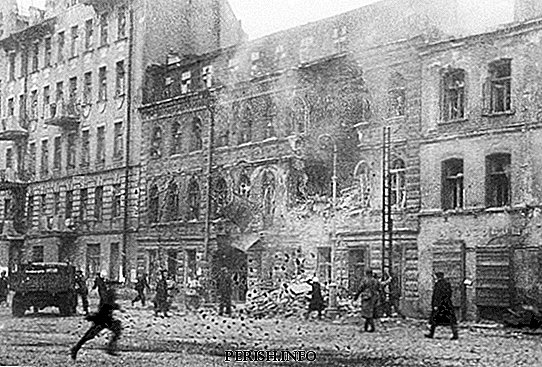
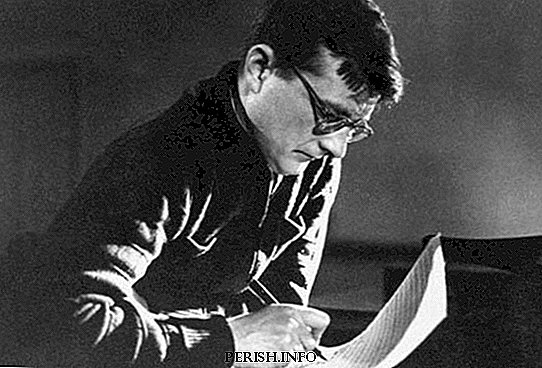
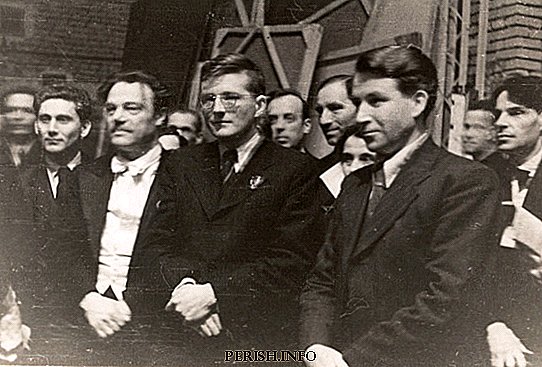
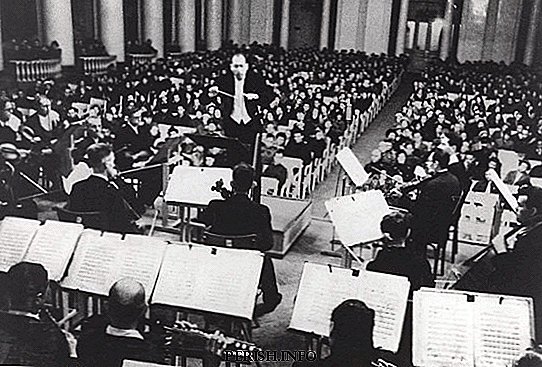
Interesting facts about the symphony №7 by Shostakovich
- The name "Leningrad" work received from the famous poetess Anna Akhmatova.
- Since writing Symphony No. 7, Shostakovich has become one of the most politicized works in the history of classical music. Thus, the date of the premiere of the symphonic work in Leningrad was not chosen by chance. The complete massacre of the city, built by Peter the Great, was scheduled for the ninth of August according to the plan of the Germans. The commander-in-chief issued special invitation cards to the Astoria restaurant, which was popular at the time. They wanted to celebrate victory over the besieged in the city. Tickets for the premiere of the symphony were distributed to blockaders for free. The Germans knew about everything and became unwitting listeners of the work. On the day of the premiere, it became clear who would win the battle for the city.
- On the day of the premiere, the whole city was filled with the music of Shostakovich. The symphony was broadcast on the radio as well as from city street loudspeakers. People listened and could not hide their own emotions. Many cried from overflow with a sense of pride for the country.
- The music of the first part of the symphony became the basis of the ballet called the Leningrad Symphony.
- The famous writer Alexei Tolstoy wrote an article about the "Leningrad" symphony, in which he not only identified the work as a triumph of the thought of the human in man, but also made out the work from a musical point of view.
- Most of the musicians were taken out of the city at the beginning of the blockade; therefore, difficulties arose in assembling an entire orchestra. But still it was assembled, and the work was learned in just a few weeks. He conducted the Leningrad premiere of a famous conductor of German origin, Eliasberg. Thus, it was emphasized that regardless of nationality, each person strives for peace.
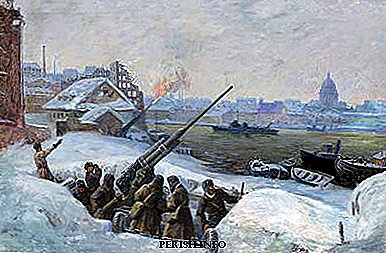
- The symphony can be heard in the famous computer game called Entente.
- In 2015, the work was performed in the Philharmonic of the city of Donetsk. The premiere took place as part of a special project.
- Poet and friend Alexander Petrovich Mezhirov devoted poems to this work.
- One of the Germans, after the Soviet victory over Nazi Germany, admitted: “It was on the day of the premiere of the Leningrad symphony that we understood that we would lose not only the battle, but the entire war. Then we felt the power of the Russian people, which could overcome everything, and hunger and death.
- Shostakovich himself wanted the symphony in Leningrad to be performed by his favorite orchestra of the Leningrad Philharmonic Society, which was directed by the brilliant Mravinsky. But this could not happen, because the orchestra was located in Novosibirsk, the transportation of musicians would become too difficult and could lead to tragedy, as the city was under blockade, so the orchestra had to be formed from people who were in the city. Many were musicians of military orchestras, many were invited from neighboring cities, but in the end the orchestra was assembled and performed the piece.
- During the performance of the symphony, a secret operation "Flurry" was successfully conducted. Later, a participant in this operation will write a poem dedicated to Shostakovich and the operation itself.
- A review by a journalist from the English Time magazine, who was specifically sent to the USSR for a premiere in Kuibyshev, has been preserved. The correspondent then wrote that the work was filled with extraordinary nervousness, he noted the brightness and expressiveness of the melodies. In his opinion, the symphony must have sounded in Great Britain and around the world.
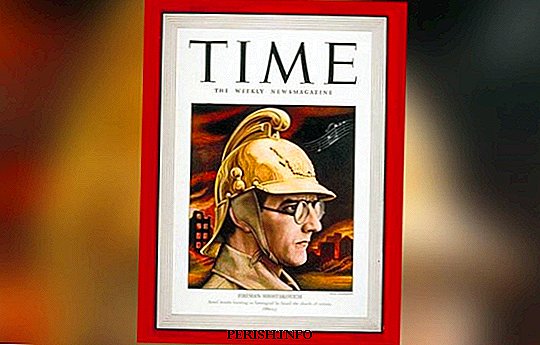
- Music is associated with another military event that has already happened today. August 21, 2008 the work was performed in Tskhinval. The conductor of the symphony was Valery Gergiev, one of the best conductors of our time. The performance was broadcast on the leading channels of Russia, the broadcast was also conducted on radio stations.
- On the building of the St. Petersburg Philharmonic, you can see a plaque dedicated to the premiere of the symphony.
- After signing a surrender in one of the news releases in Europe, the reporter said: "Is it possible to defeat a country in which during such terrible hostilities, blockades and death, destruction and starvation people manage to write such a strong work and execute it in a blockade city? I think not. This is a unique feat. "
Contents of the Leningrad Symphony
The Seventh Symphony is one of the works written on a historical basis. The Great Patriotic War awakened in Shostakovich a desire to create a writer that helps a person find faith in victory and the attainment of a peaceful life. The heroic content, the triumph of justice, the struggle between light and darkness - this is what is reflected in the work.

Symphony has a classic 4-private structure. Each part has its own role in the development of drama:
- I part written in sonata form without development. The role of the part is the exposition of the two polar worlds, namely, the main party is a world of calmness, grandeur, built on Russian intonations, a side party complements the main part, but at the same time changes its character and resembles a lullaby. The new musical material, called the "episode of the invasion" - is a world of war, anger and death. A primitive melody accompanied by percussion instruments is held 11 times. The climax reflects the struggle of the main party and the “invasion episode”. From the codes it becomes clear that the main party won.
- II part is a scherzo. Music contains images of Leningrad in peacetime with notes of regret about past peace.
- Part III is adagio, written in the genre of the requiem for the dead. The war took them forever, the music is tragic and sad.
- The final the struggle of light and darkness continues, the main party gains energy and defeats the “invasion episode”. The theme of the sarabanda glorifies all those who died in the struggle for peace, and then the main party is approved. Music sounds like a real symbol of a brighter future.
The key in C major was not chosen by chance. The fact is that this key is a symbol of a clean slate, on which the story is written, and where only the person decides it will turn. Also in C major, there are many possibilities for further modulations, both in the flat and sharp directions.
Using the music of Symphony No. 7 in movies
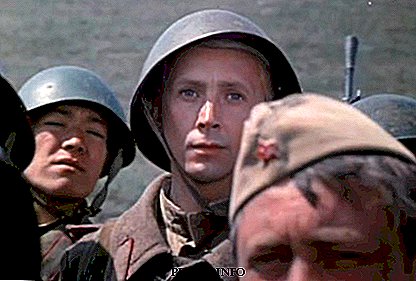
Today, the Leningrad Symphony is rarely used in cinema, but this fact does not diminish the historical significance of the work. Below are the movies and TV shows in which you can hear excerpts of the most famous compositions of the twentieth century:
- "1871" (1990);
- "Military field novel" (1983);
- "Leningrad Symphony" (1958).
"Leningrad Symphony" Dmitri Dmitrievich Shostakovich is a grandiose work, glorifying the power and invincibility of the Russian people. This is not just an essay, it is a story telling about a feat, about the victory of good over evil. And while Shostakovich’s seventh symphony solemnly sounds, the whole world will remember the victory over fascism, and how many people put their own lives so that we have a bright sky overhead today.

Leave Your Comment